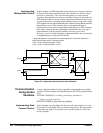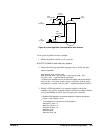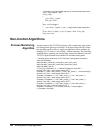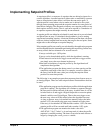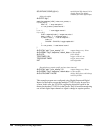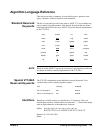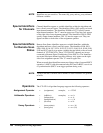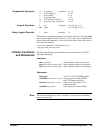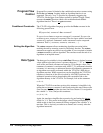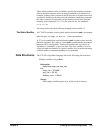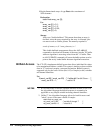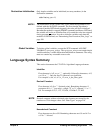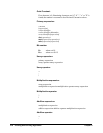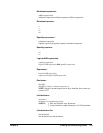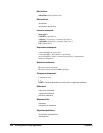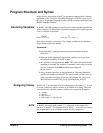
210 Creating and Running Algorithms Chapter 6
Program Flow
Control
Program flow control is limited to the conditional execution construct using
if and else and return. Looping inside an algorithm function is not
supported. The only "loop" is provided by repeatedly triggering the
VT1422A. Each trigger event (either external or internal Trigger Timer)
executes the main() function which calls each defined and enabled
algorithm function. There is no
goto statement.
Conditional Constructs The VT1422A Algorithm Language provides the if-else construct in the
following general form:
if (expression) statement1 else statement2
If expression evaluates to non-zero statement1 is executed. If expression
evaluates to zero, statement2 is executed. The else clause with its associated
statement2 is optional. Statement1 and/or statement2 can be compound
statement. That is { statement; statement; statement; ... }.
Exiting the Algorithm The return statement allows terminating algorithm execution before
reaching the end by returning control to the main() function. The return
statement can appear anywhere in an algorithm. It is not required to include
a return statement to end an algorithm. The translator treats the end of an
algorithm as an implied return.
Data Types The data type for variables is always static float. However, decimal constant
values without a decimal point or exponent character (".", "E" or "e"), as
well as Hex and Octal constants are treated as 32-bit integer values. This
treatment of constants is consistent with ANSI 'C'. To understand what this
can mean, it is necessary to understand that not all arithmetic statements in
an algorithm are actually performed within the VT1422A's DSP chip at
algorithm run-time. Where expressions can be simplified, the VT1422A's
translator (a function of the driver invoked by ALG:DEF) performs the
arithmetic operations before downloading the executable code to the
algorithm memory in the VT1422A. For example, look at the statement:
a = 5 + 8;
When the VT1422A's translator receives this statement, it simplifies it by
adding the two integer
constants (5 and 8) and storing the sum of these as the
float constant 13. At algorithm run-time, the float constant 13 is assigned to
the variable "a." Now, analyze this statement:
a = ( 3 / 4 ) * 12;
Again, the translator simplifies the expression by performing the integer
divide for 3 / 4. This results in the integer value 0 being multiplied by 12
which results in the float constant 0.0 being assigned to the variable "a" at
run-time. This is obviously not what was wanted, but is exactly what the
algorithm instructed.



